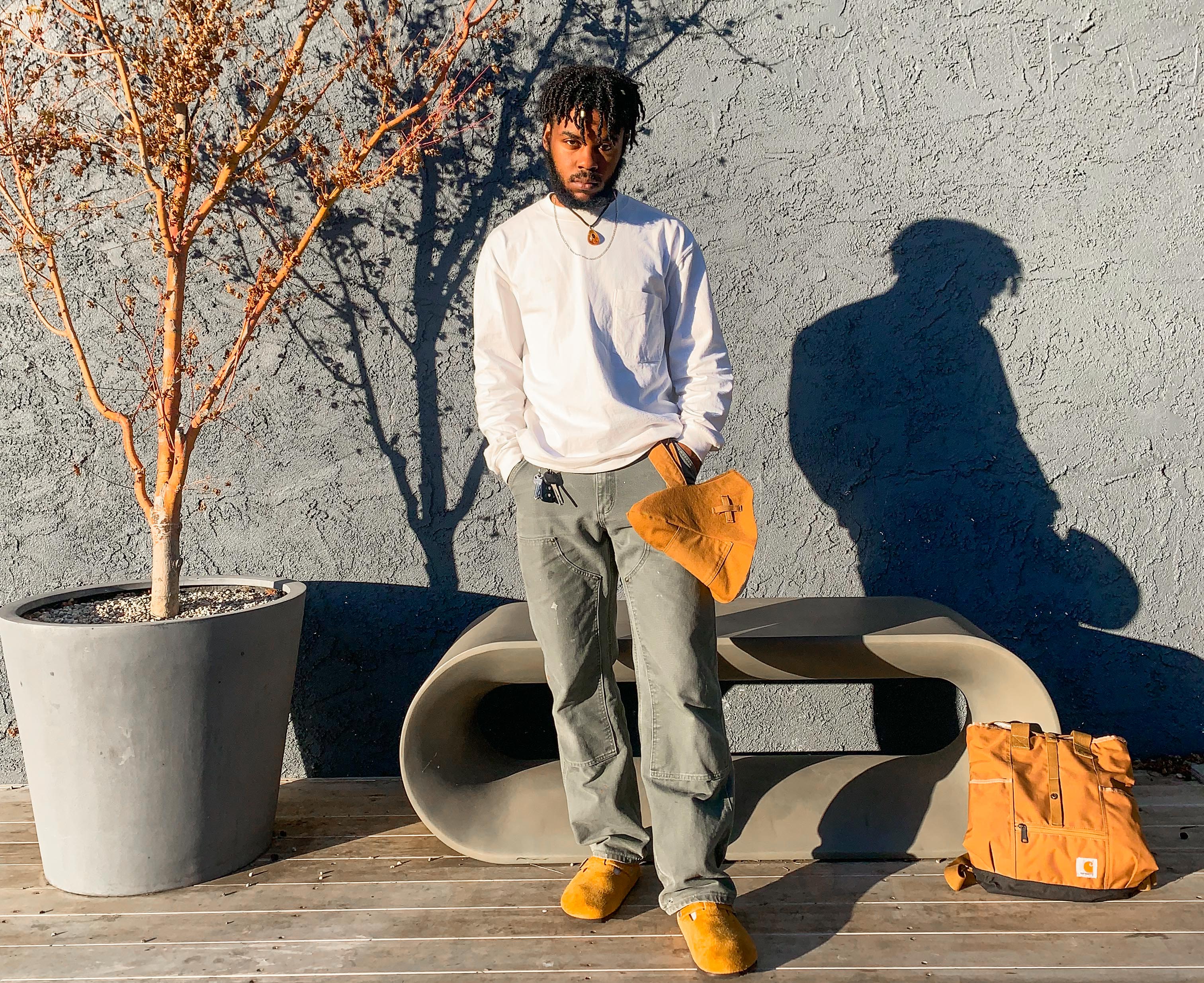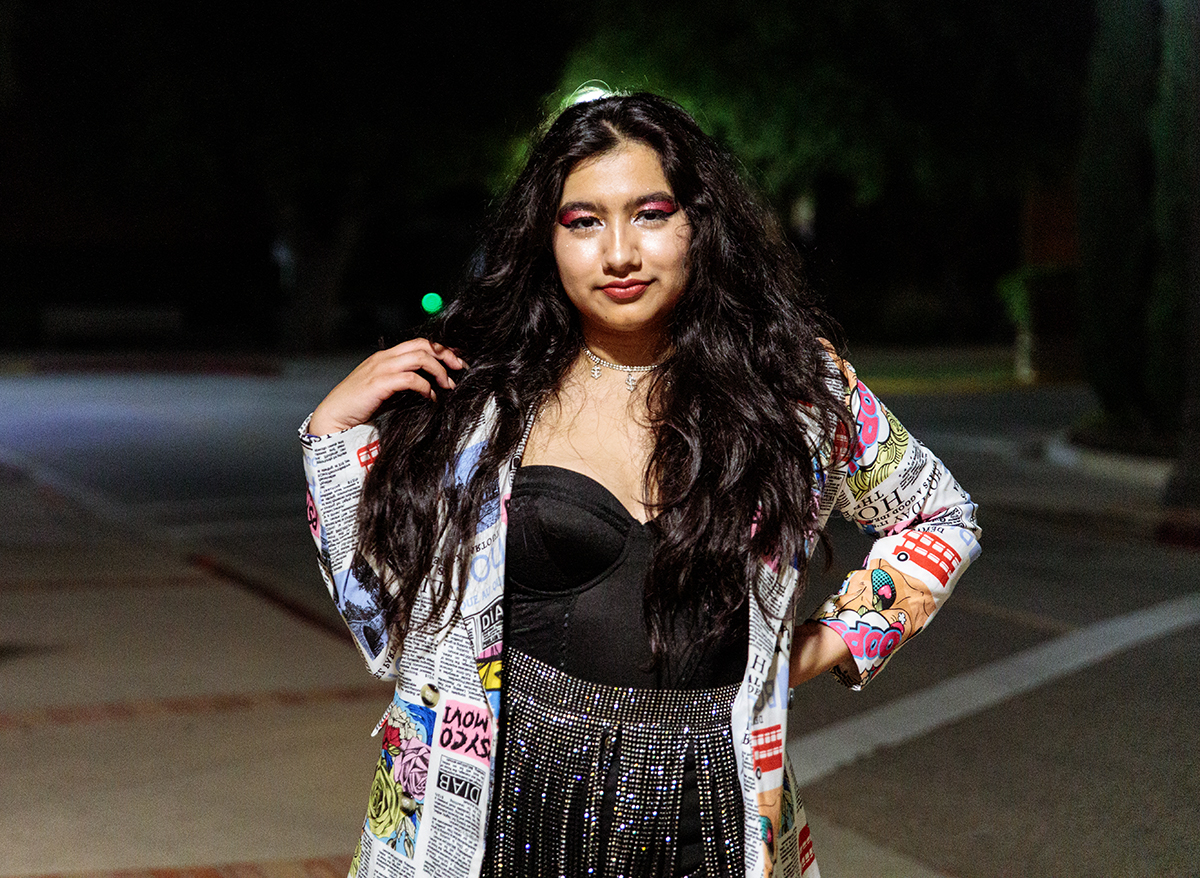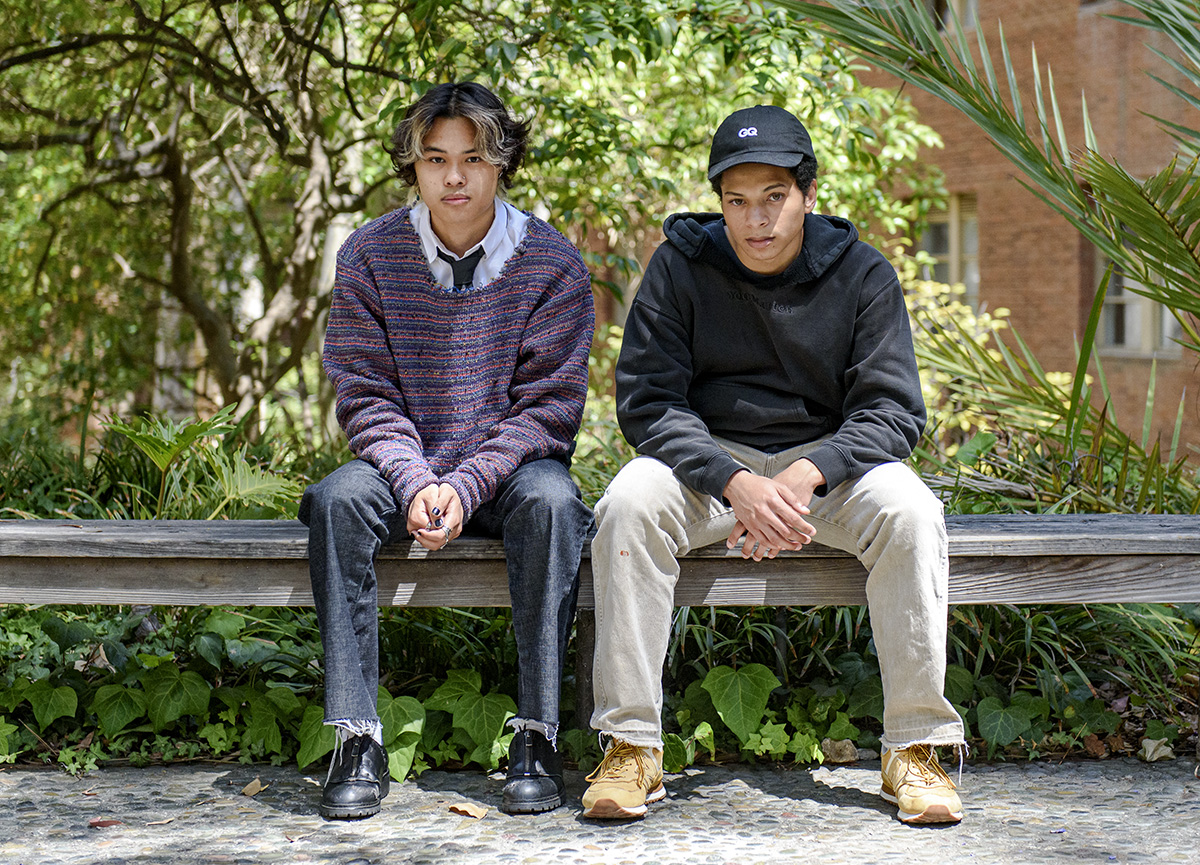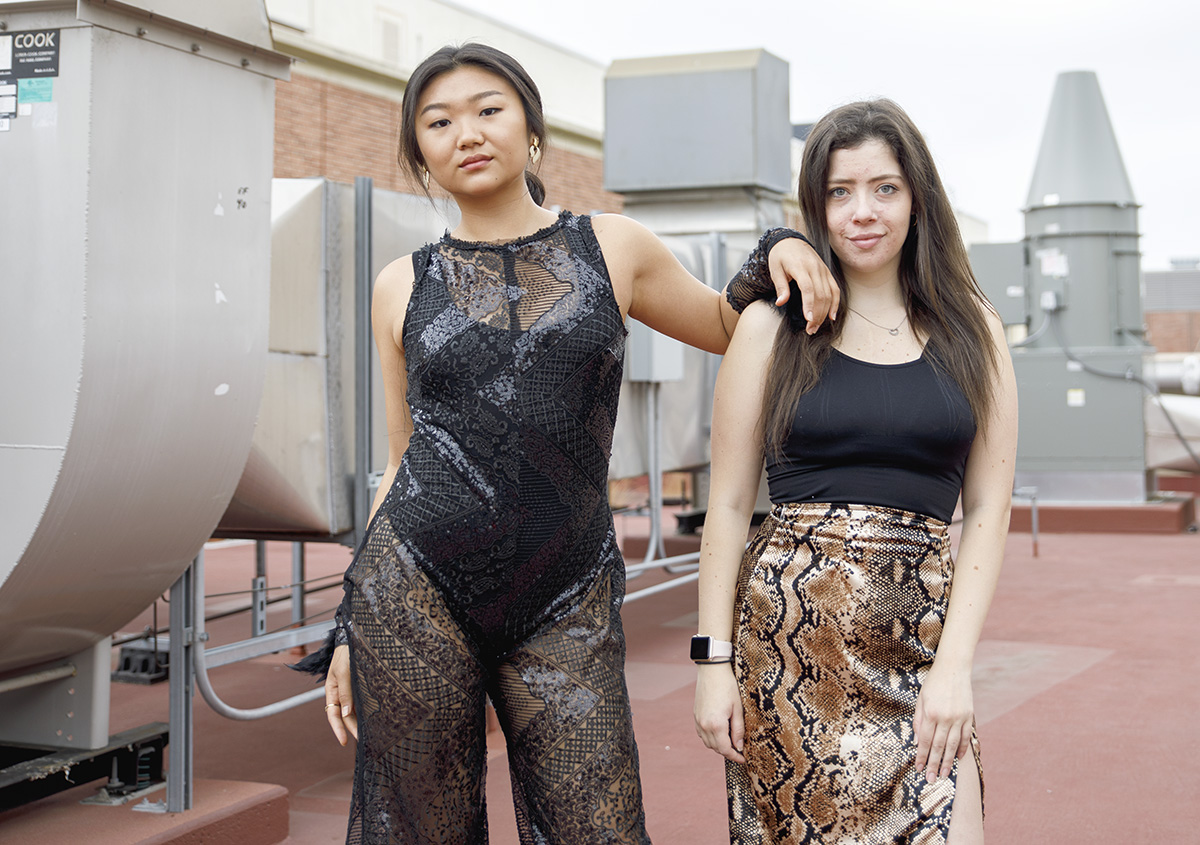FAST 2022: Designer duo conveys message of unity in Nigerian wedding-inspired collection
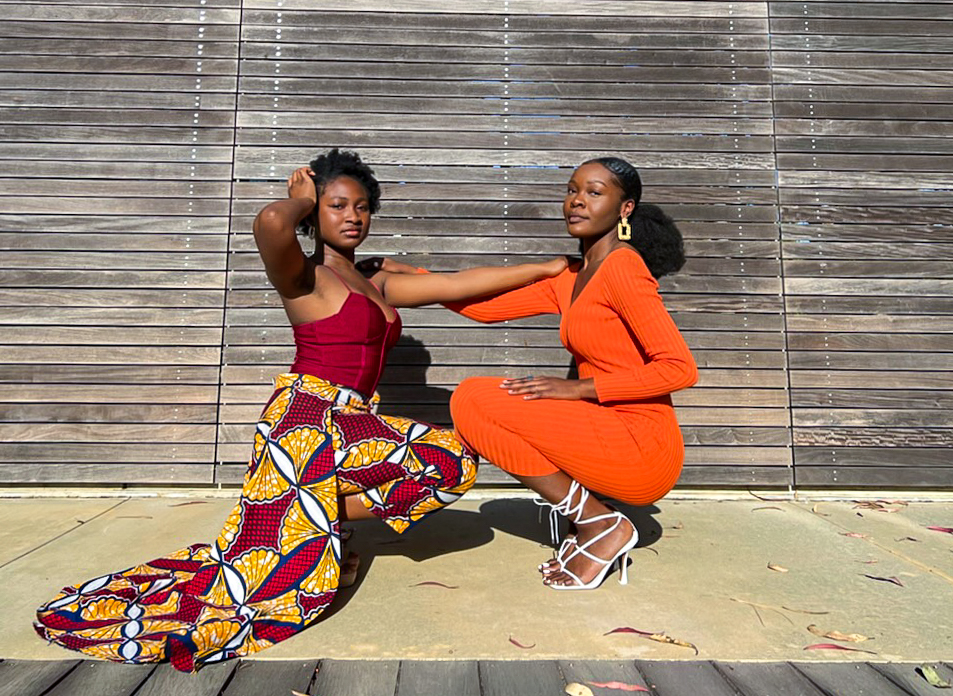
Third-year psychobiology student Chizaram Iwuanyanwu (left) and second-year economics student Bisola Amudipe (right) pose in front of a wood wall in vibrant outfits. Amudipe said the pair’s collection for the Fashion and Student Trends at UCLA spring runway show is based on traditional Nigerian wedding attire and conveys a message of unity within the divided country. (Courtesy of Chizaram Iwuanyanwu)
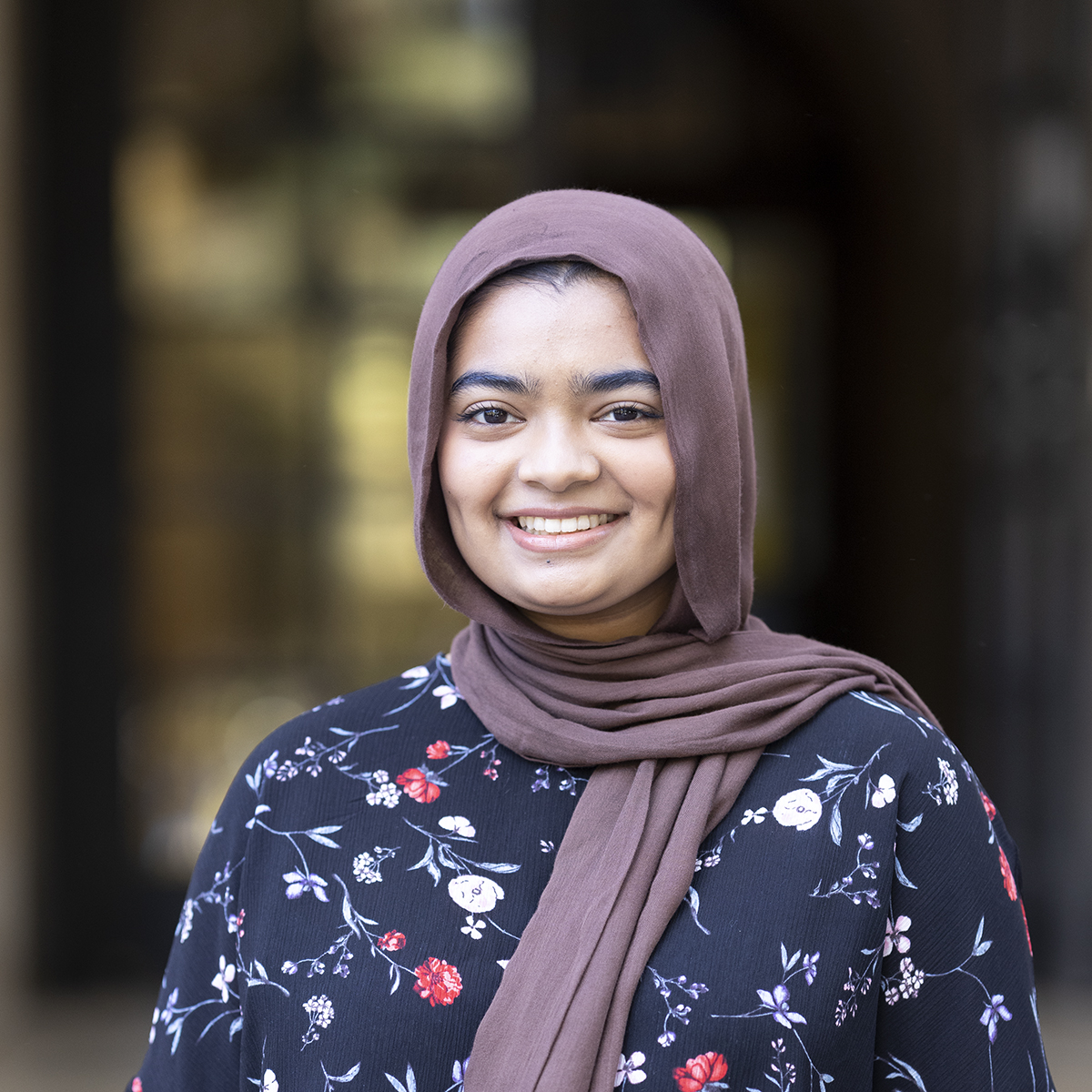
By Sarah Karim
May 24, 2022 9:11 p.m.
This post was updated May 25 at 7:04 p.m.
There is no greater symbol of unity than a wedding.
Honoring this sentiment, third-year psychobiology student Chizaram Iwuanyanwu said she and second-year pre-business economics student Bisola Amudipe modeled their 2022 Fashion and Student Trends at UCLA collection – which will be displayed Friday – after the traditional wedding attire of Nigerian tribes. Their collection is called One Nigeria, and Amudipe said it utilizes traditional clothing as a medium to show the unification between the country’s different tribes. She said the wedding aspect stemmed from the idea that weddings bring families together, and the pair wanted to represent the message of unity within a country that is fractured.
“(We are) trying to show that although we are different tribes, we still try to unify because we all come from one continent and one country,” Amudipe said. “It (the collection) is a wedding of all the tribes.”
In their collection, the duo focused on representing three tribes – the Yoruba, Igbo and Fulani – two of which are the designers’ native Nigerian tribes, Iwuanyanwu said. The Fulani people were not very well known by the pair, Iwuanyanwu said, and including them in the collection was an opportunity to learn about the extensive history between their own tribes and the Fulani. Iwuanyanwu said her passion for design was largely inspired by her culture since sewing and handwork are common skills to have.
[Related: Alumnus-run clothing brand expands, creates home for artists of all mediums]
Amudipe said her love for design came from a similar fascination with fabric from a young age. Her first experience with garment creation was an elementary school assignment, she said, in which she sewed her own pillowcase. Additionally, she said it is common to customize clothes through tailors in Nigeria, inspiring her further to make designs herself, she said.
“What I love the most (about designing) has to be just the process of it and then the satisfaction after everything,” Iwuanyanwu said. “As you go through that process, you see your vision slowly coming to life.”
The pair used various traditional African concepts throughout their collection, Iwuanyanwu said. For materials, she said they decided to use a traditional African cloth called ankara, also known as African wax print. The pair also created two designs that represent masquerades, since there are cultural and religious masquerade dancers at traditional Nigerian weddings, she said. The pair also decided to create culturally significant accessories along with their designs, Iwuanyanwu said, such as fans and headpieces called gele.
To ensure the exhibition of their collection would fit the concept of Nigerian weddings, the designers decided to create lighting that displayed qualities of spirituality and nature, Amudipe said. They also deliberately chose the music to incorporate Afrobeats and traditional Nigerian wedding tunes, Iwuanyanwu said. When it came to making specific decisions for models, Amudipe said the duo wanted to focus on having African American and Ethiopian models so that her culture is represented in the best way possible, especially since cultural appropriation is prevalent in the fashion industry.
As a model for Iwuanyanwu and Amudipe’s collection, third-year mechanical engineering student Marcus Vidaurri said he enjoys witnessing the excitement designers have when they finally see how pieces fit on the model. He said it has been an eye-opening experience to wear more meaningful pieces because they were created by students with intention, especially since they were made for him.
“There’s a majestic energy to the pieces that they (Iwuanyanwu and Amudipe) create,” Vidaurri said. “They give a feeling of royalty and power.”
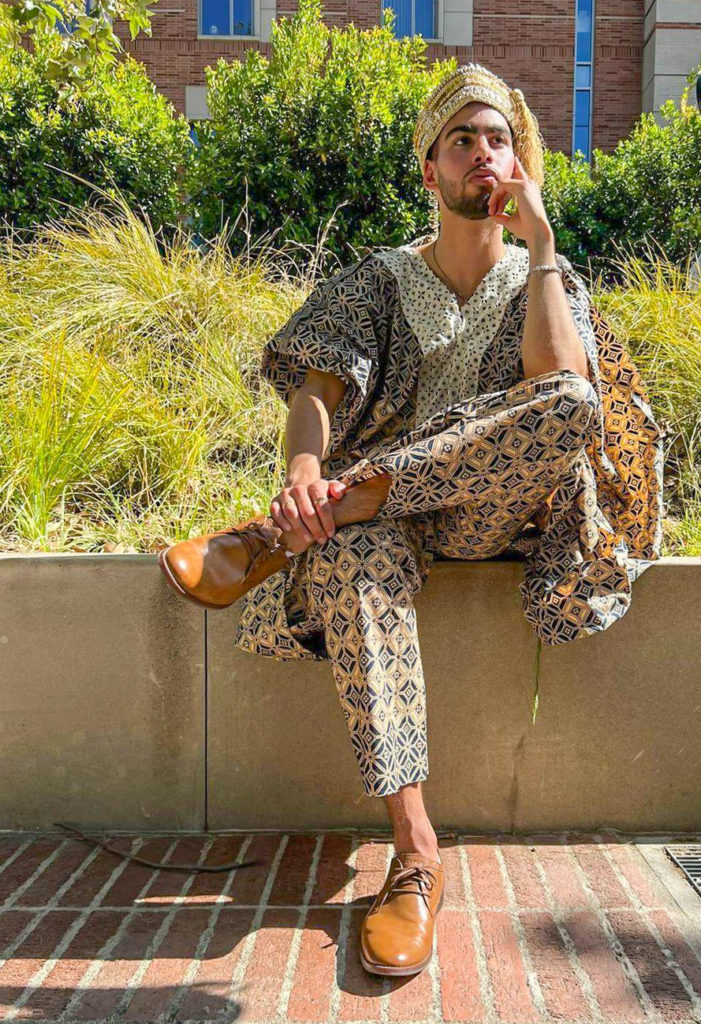
[Related: Student stitches fashion with sustainability to create vibrant upcycled clothes]
As Vidaurri models the collection, he said he wants to express as much confidence as possible while walking the runway and posing. He said he wants to exude the same mannerisms that would occur at a wedding or a special event. As he walks the runway, Vidaurri said he is purposefully over the top with his mannerisms, so that he displays the details of the clothing as much as he can.
For this collection, Vidaurri said he hopes the audience feels the artistry present in all the pieces. Before modeling the collection, he said there were details he was unaware of and he learned the intricacies of fashion design by observing all the moving parts backstage. He said he has seen how each decision regarding the shapes and material of the piece will affect the way it drapes or cinches on the body of a model.
Amudipe said she hopes she can bring a part of Nigeria to the audience so they can take away some of the intricacies of Nigerian culture, specifically as it relates to significant events such as weddings. Both designers aim to accurately represent Africa to the audience, but they also want to make sure people don’t misinterpret what Africa truly is, she said.
“(We want) to get rid of the stigma that surrounds Africa as a whole,” Iwuanyanwu said. “It’s not a country – it’s a continent that’s full of life, full of so many different types of people with … so many different things that people don’t see.”



